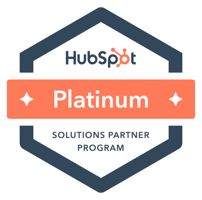Let's dig deeper into what workflows are, what they involve, and what benefits CRM workflow automation can provide for your business.

What are Workflows?
The dictionary definition of a workflow is "the sequence of steps involved in moving from the beginning to the end of a working process."
Simply put, a workflow is a series of steps that you (or your employees) need to take in order to achieve a specific goal. Workflows can be compared to conditional "if/then" statements; in other words, if this happens, then do that.
Workflows are triggered when certain criteria are met. For instance, if a user signs up for your newsletter and enters his or her contact information into a form, then once that form is submitted it may trigger a specific "lead nurturing" workflow (e.g., send the subscriber a welcome email, follow up with a call within 3 days, offer a special promotional code for one of your products, and so forth).
Workflows are not a substitute for problem-solving skills. They should not be so rigid and inflexible that your employees lose sight of the end goal. However, workflows are very helpful when it comes to completing repeatable, routine activities. They take the guesswork out of typical processes and help your employees to focus their time and energy on more important tasks. The kind that requires human intelligence.
The Different Parts of a Workflow
A workflow may be simple and straightforward, or it may be long and complicated. In either case, there are some basic components that all workflows have in common. These include:
- The goal - You need to have a clear objective in mind for each workflow you develop.
- The process - Steps contained in the workflow. This is like the "foundation" of the workflow. It's the structure on which you'll build value by adding criteria, triggers, and actions.
- The criteria - Conditions that must first be met before the workflow becomes active.
- The trigger(s). A workflow's triggers are the events that set it into motion. In some cases, your workflow may have a "delayed" or "timed" trigger; i.e., it won't go into effect immediately, but at a predetermined time in the future.
- The actions - Specific actions to take when the triggers go off.
Examples of Workflow Automation
Now that we've talked about what workflows are, and how they work, let's explore a few examples of workflow automation. Remember, workflow automation makes your employees' jobs easier. It should help them seamlessly move from one step in the process to the next, and finally achieve the end goal. Here are some common use cases of workflow automation in the business world:
Sales and Marketing.
From analyzing the quality of a lead ("lead scoring") to aligning sales materials with current marketing campaigns to knowing when to hand off a qualified lead to the appropriate team, your sales and marketing departments have a ton of data to sort through on a daily basis. Workflow automation can prevent your employees from suffering information overload. It can also help sales and marketing to collaborate more closely on moving prospects down the sales funnel.
Customer Support.
Addressing customer support issues effectively is one of the biggest challenges that an organization may face. Companies often have to balance providing high-quality customer service with meeting the sheer demand of customer inquiries in a timely manner. Again, workflow automation can help. For example, your support reps may be able to use your CRM to direct customers that have the same question or complaint to a specific article in your knowledge database. Automated workflows can also help your reps know when it's appropriate to escalate an issue to their manager.
Administration and data entry.
Certain departments may have to keep track of customer information, and update their records on a frequent basis. For example, your accounts receivable department has to stay up-to-date on invoices, payment schedules, due dates, etc. Workflow automation can eliminate much of the repetitive nature of routine administrative tasks. A robust CRM system will allow you to develop processes that save time for both your data entry team and your customers.

The Benefits of CRM Workflow Automation
There are several benefits that come from implementing CRM workflow automation. Here are just a few of them:
Less human error.
The fact of the matter is, machines are better at performing repetitive activities than humans are. Human employees may be prone to make mistakes even when it comes to simple data entry tasks, especially if they are tired or distracted. In contrast, workflow automation can greatly reduce (or in some cases eliminate) the amount of error associated with routine tasks.
More scalability.
Instead of being forced to hire more employees to cope with increased business demands, companies may be able to streamline and optimize their processes through workflow automation. And of course, workflows can be refined and updated according to current business needs.
Increased productivity.
There's an old saying: "Work smarter, not harder."
Workflow automation is a classic example of how that saying can apply to the real world. Employees are able to focus on value-adding activities without having to think about the performance of routine tasks or waste time figuring out the next step in the process.
Lower costs.
CRM workflow automation can eliminate many labor costs. They can help departments like product development, sales, and marketing to accomplish key objectives more quickly.
Would you like to learn more about the advantages of using CRM workflow automation? Feel free to reach out to our team at OverGo Studio for a free consultation. We'd be happy to answer any questions you may have!
Take advantage of our free Hubspot CRM Configuration to start modernizing your sales process. This is a limited-time offer where we will design a sales pipeline specifically for your business. Start generating more revenue and improve your close rates by building your first high-performing sales pipeline on HubSpot at no cost. Simply schedule a discovery session with our team of HubSpot experts.


